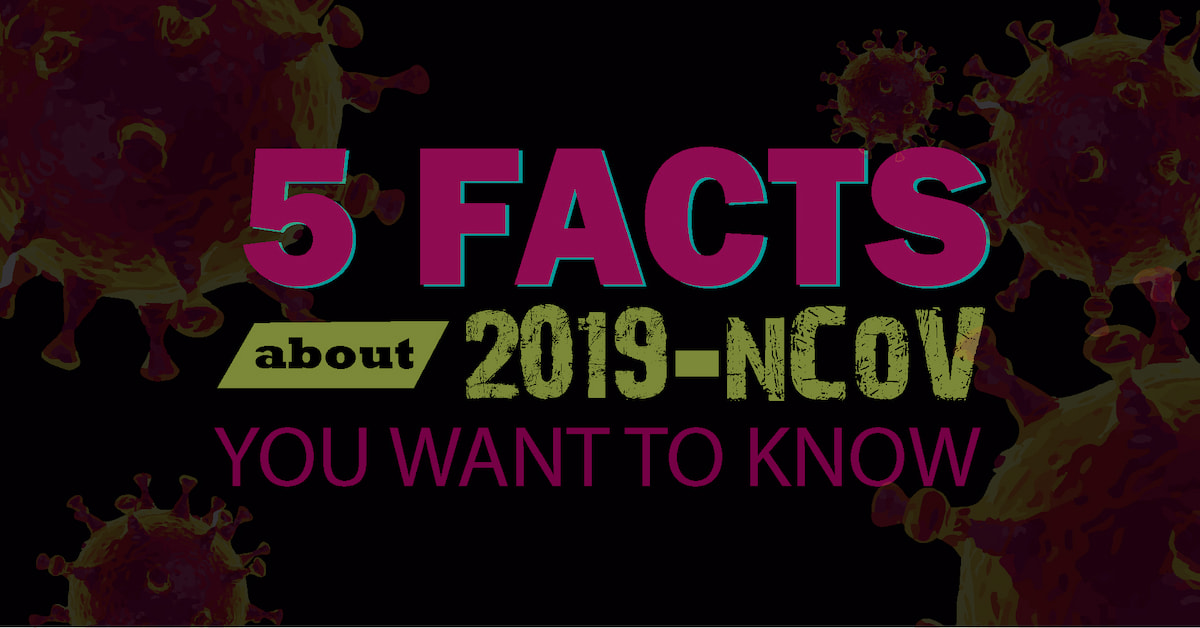5 Facts About the Novel Coronavirus You Want to Know

 Reports of the spread of the novel coronavirus from China show a continued spread of the illness. The many news articles available cover the story as it unfolds, but there might be some basics that remain unanswered. In today's post, we'll answer five questions that will give you needed context to understand the virus and its spread.
Reports of the spread of the novel coronavirus from China show a continued spread of the illness. The many news articles available cover the story as it unfolds, but there might be some basics that remain unanswered. In today's post, we'll answer five questions that will give you needed context to understand the virus and its spread.
1. Why is it called a coronavirus? Isn't any virus just another virus?
There are many ways to classify viruses, and many are still being designed as we learn more about the field of virology. Even though viruses are not technically alive, they are still arranged like living things into phylum, order, and family. The Coronaviridae family is just one example and includes Severe Acute Respiratory Syndrome (SARS), and Middle East Respiratory Syndrome (MERS), and even a coronavirus that causes the common cold. Even the family is subdivided into further sub-families, generas, and sub-generas that include both human and animal viruses. What all coronaviruses have in common is that they are enveloped, positive-sense, single-stranded RNA viruses typically in a spiked-sphere shape. The name "coronavirus" comes from these spikes, that give it a crown-like appearance. (Corona means wreath or crown in Latin.) This new coronavirus is called 2019-nCoV, which indicates the year it was first isolated, the "n" for new, or novel, and CoV for coronavirus. A new official name will be determined at a later date, with the scientist who first isolated the virus given an opportunity to propose a choice.
2. Bats, snakes, fish markets - why is there so much discussion about animals?
Pathogens come from our environment. Bacteria and fungi can live on their own on surfaces, in waste, and in the soil as well as in human and animal hosts. Viruses, on the other hand, are not alive. Without a host cell, a virus is nothing but a package of genetic material. Therefore, viruses are spread from living host to living host, and they can include animals and humans. Most animal viruses are contained because they are simply not capable of infecting a human cell due to structure and chemical make-up. However, viruses mutate quickly, so every once in a while, an animal virus will mutate just enough to skip to another species. Sometimes that means a bat virus will mutate enough that it can infect a bird, or a bird virus will mutate enough that it can infect a pig. This also means a bat, bird, pig, or even camel virus can mutate enough to infect a human being. (That's why we get names like "equine encephalitis," "swine flu," and "avian flu.") When animals live in close proximity to humans, the risk of a virus spreading is increased. When domesticated and wild animals are sold side-by side in live markets, the risk of virus spread is also increased. In the case of 2019-nCoV from Wuhan, China, both these scenarios were in active practice. Currently, the best hypothesis points to a bat origin with another animal (as of yet unknown) serving as an intermediary host. This intermediary host would have been bitten by a bat, become infected, and then come into close proximity with humans, possibly at the live animal market in Wuhan. (And why bats? They, more than any other mammal, are able to host viruses without getting sick due to a unique immune system.)
3. Why is 2019-nCoV still spreading even though there are quarantines, travel bans and screening in place?
This particular strain of coronavirus appears to be contagious before symptoms appear. In the case of MERS and SARS, this was not the case: Patients were contagious and had symptoms at the same time. Consider chicken pox - a patient is contagious 2 days before the spots appear because they are shedding virus particles through saliva. Measles, among the most contagious viral infections, is contagious up to 4 days before the first rash appears.
4. How easy it is to get 2019-nCoV? How lethal is it?
While estimates are improving as more data is collected, it appears that this coronavirus has a low reproduction number (R-naught, or R0), that is, the number of people an infected patient will transmit the virus to if not quarantined. At this time, the R0 is 1.4-2.6 people. In contrast, SARS and HIV both have an R0 of 4, and measles has an astounding R0 of 12-18!
Based only on current numbers, the fatality rate for 2019-nCoV is 2.4%. The World Health Organization (WHO) reports that 20-25% of those infected develop a serious illness. For comparison, the fatality rate for SARS was 9.6% and for MERS was 34.5%.
5. Is there a vaccine for 2019-nCoV?
Not yet. Due to the similarities with SARS and MERS, a vaccine for 2019-nCoV can be developed more quickly. Recent reports indicate a Phase I vaccine trial will be available in three months or less. For comparison, the Phase I trial for Zika, another RNA virus, was in place in 3.2 months. Typical drug development takes years, but the need for immediate use pushes the vaccine trials to a faster timeline. New developments in genomic sequencing also mean that the genome for 2019-nCoV was available within weeks, while the SARS sequence took 7 months to complete.
Research will continue to reveal details and more precise characteristics of this novel coronavirus. While the public's attention is focused on this emerging illness, we hope they will remember that we are in the midst of our annual flu season here in the US that has already affected 15 million Americans and claimed the lives of up to 20,000. While we await updates on 2019-nCoV, we should all go out and get our flu shots (if we haven't already!).
![EOScu Logo - Dark - Outlined [07182023]-01](https://blog.eoscu.com/hubfs/Eoscu_June2024/Images/EOScu%20Logo%20-%20Dark%20-%20Outlined%20%5B07182023%5D-01.svg)




